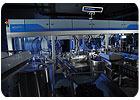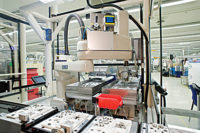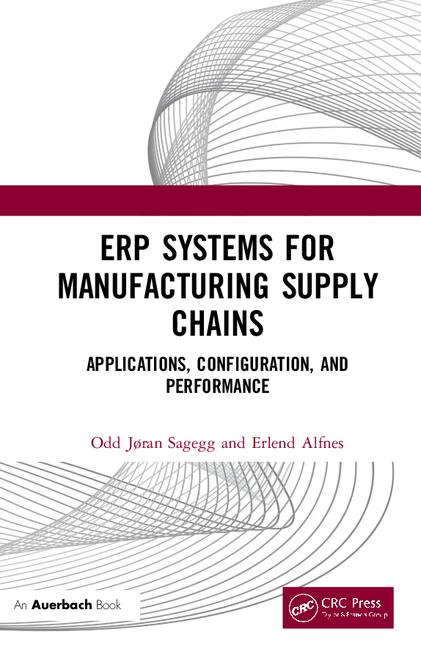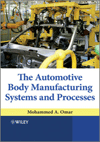
Starting with standardized assembly chassis, like the Spaceline linear transfer system and the Discovery rotary indexing system from Sortimat Technology, reduces engineering time and gets products to market faster.
This is what one manufacturer had in mind when it commissioned Sortimat to design a system to assemble a pharmaceutical device 17 millimeters wide and 65 millimeters long. The device consists of nine plastic parts and one steel part.
Sortimat created a system of three Spaceline modules, one Discovery module and one tote handler-all linked together. The Spaceline comes in standard lengths of 3.71, 5.1 and 6.51 meters. The width is 1.2 meters if one side of the machine is tooled up, or 2.3 meters if both sides are used. Each module accommodates 13 to 54 stations, which can be freely positioned anywhere on the machine. Individual segments can operate with differing cycle times without affecting total output. It runs at a maximum rate of 80 cycles per minute.
The servo-driven Discovery runs at a maximum rate of 150 cycles per minute. It can be equipped with 12, 16 or 20 stations. Like the Spaceline, it can operate in a Class 10,000 clean room, and it complies with FDA requirements for medical and pharmaceutical device manufacturing.
To reduce tooling complexity and increase performance, each module assembles and tests units to a logical break point. Only units identified as acceptable are transferred to the next module. The final product is then automatically loaded into totes.
In this profile, Howie Speiden, application manager at Sortimat, describes the system. For more information, call Sortimat at 847-925-1234 or visitwww.sortimat.com.
What equipment feeds the parts?Vibratory bowls feed the components. Cam-operated pick-and-place devices or similar mechanisms retrieve and assemble them.
What methods are used to assemble the product?Most assembly steps involve rotating one part into another. Because most of the parts are cylindrical, each station must establish the radial orientation of the part to assemble it correctly. This is accomplished using sensors or vision systems feeding information to servos.
In addition, two components are bonded with a UV-curable adhesive, and two components are ultrasonically welded.
What inspections are included?Sortimat’s standard practice is to verify the success of an operation immediately after execution. When the system detects a failure on a specific operation, the position is loaded into the PLC register, tracked throughout the remaining operations, and unloaded to a reject bin. After identifying a failure, all subsequent operations, such as inserting other components, are omitted, so value is not added to a faulty assembly.
What tests are included?Because assembly entails screwing one part into another, most quality checks involve verifying the height of the assembly with linear displacement transducers. These verifications are in addition to our standard checks. In addition, color sensors verify the presence of print on some parts, and vision systems identify orientation of the parts.
All totaled, how many assembly, inspection and test stations are part of the system? The three Spaceline modules provide 120 assembly and test stations, some of which are empty for logical reasons. Packaging stations are excluded from that number.
What was the most challenging aspect of designing the system?The biggest challenge was to develop a high-performance system that could assemble that many components. We overcame the challenge with thorough planning and validation of principals.
Editor’s note: Whether you’re a systems integrator or the in-house automation team of an OEM, if you’ve designed a system that you’re particularly proud of, tell us about it. Send an e-mail to John Sprovieri, editor of ASSEMBLY, at sprovierij@bnpmedia.com, or call 630-694-4012.




